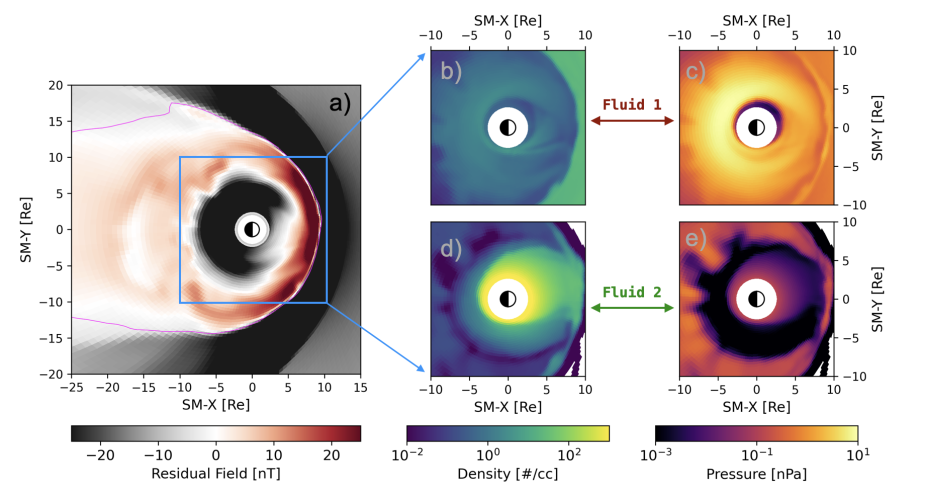JGR Space Physics: The ionized atoms in near-Earth space, the plasma, consist of a number of species including hydrogen, helium, and oxygen in various states of ionization. Hydrogen is usually the predominant component, but other species can play an important role in the dynamics of space plasmas. Computer simulations of these plasmas, including the effects of the magnetic and electric fields, have been quite successful at describing the near-Earth space. However, in general, they have rarely included any ion species other than hydrogen. This paper describes a multifluid approach that makes it possible to include other ion species assuming the ions are tightly bound to magnetic field lines. In this case, the ions all move together perpendicular to the local magnetic field but are free to move individually along the field direction. This work shows how changes in the magnetic field direction can act to accelerate ions along the field, much like a jai alai ball being thrown with a cesta. The work also shows how plasma waves behave in such a multifluid environment. Finally, the paper presents results of a super-computer simulation of the near-Earth space, modeling the behavior of different plasma fluids and their interactions during a geomagnetic storm.

Overview image of the multifluid MAGE application with a separate fluid for plasma of plasmaspheric origin. All panels are shown in the equatorial plane of the magnetosphere and panels (b-e) correspond to the marked box in panel (a). Shown are: the residual, i.e., non-dipolar component, of the northward magnetic field (a); the density and temperature of fluid~1 (b and c); and the density and temperature of fluid~2 (d and e).